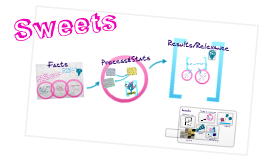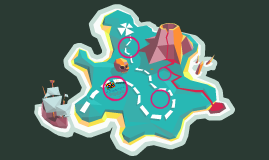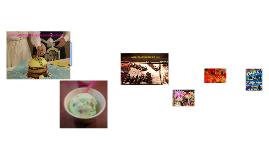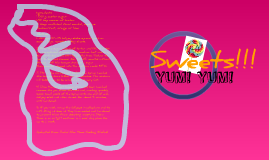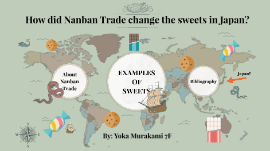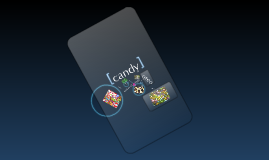Sweets
Transcript: http://en.wikipedia.org/wiki/Soft_drink Fairfield, CA Facts San Leandro, CA Gummi Bears Sprite videos Eat sugar in moderation Chocolate is beneficial to your health There are various types of natural sugar that are better for you (honey) Candy Common ingredients: sugar (sucrose), water, gelatin, starch, corn syrup, unique flavors (artificial or natural) Process: temperature determines sugar concentration, two types: crystalline (fudge), amorphous (caramels), dissolving sugar in milk or water until a syrup is formed, which is then boiled to carmalization; coloring and flavoring is added Stats: 23.9=amount of candy consumed by American/year; $84=aver. amount spent http://www.nytimes.com/2011/04/17/magazine/mag-17Sugar-t.html?pagewanted=all What are sweets? A sweet is a type of food having the pleasant taste characteristic of sugar or honey; rarely bitter, salty, or sour bibliography Guittard Chocolate Burlingame, CA Results/Relevance Health and Chemistry Bazooka http://www.facebook.com/brandon.vertrees Sources Sugar should be eaten in moderation because it has several harmful implications Sweets Chocolate (cc) photo by theaucitron on Flickr (cc) photo by theaucitron on Flickr (cc) photo by Franco Folini on Flickr Other types of sweets: cotton candy, ice cream, taffy, marshmallows, energy drinks, etc. Candy Soda Common ingredients: water, CARBONation, sweetener, flavoring agent Process: mix dry or fresh ingredients with water (carbonated or not); add syrup Gum: Common ingredients: rubber, sweetener Process: mix ingredients, add flavor, knead dough, shape gum Stats: 100,000 tons of chewing gum are consumerd/year; 374 trillion sticks are produced M&M's Soda: is a carbonated beverage. Candy: candy varieties are influenced by the size of the sugar crystals, aeration, sugar concentrations, colors and types of sugar used. Soda/Gum http://en.wikipedia.org/wiki/Chocolate Process&Stats impact Gum: a type of sweet made of chicle, a natural latex product, or synthetic rubber known as polyisobutylene Trident Layers Chocolate Common ingredients: sugar, cocoa butter, milk or milk powder, vanilla, cocoa liquor Process: Processing-fermentation, cleansing, and roasting of beans; blending; conching-grinding into smaller particles; tempering-heating to create texture of chocolate; storage Stats: average american eats 10-12 lbs/year; 3.5 million lbs/day of whole milk in chocolate; shelf-life=1 year Monterey, CA Chocolate: is a raw or processed food produced from the seed of the tropical Theobroma cacao tree. http://en.wikipedia.org/wiki/Candy Food Science: The Biochemistry of Food and Nutrition by Mehas Rodgers photos Pepsi things to remember Union City, CA By knowing the chemistry of sugar, we can find cures to several diseases that are associated with sugar Hershey's Kisses Assets Crockett, CA places to go Red Vines Important Details http://en.wikipedia.org/wiki/Chewing_gum Gobstoppers Knowing the chemistry of various sweets, scientists can counter their harmful effects by creating new, artificial sugars or finding cures to the diseases sugar may cause






